FROG Dewoitine D520 Fighter |
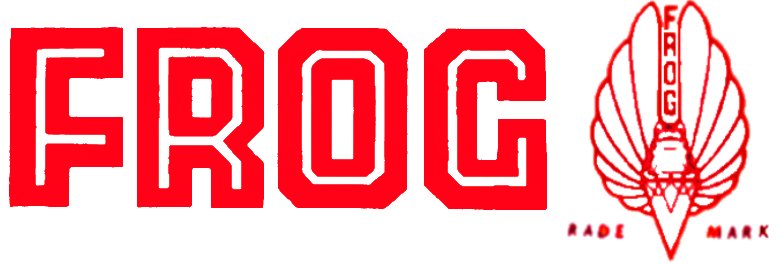
FROG Blue Series 155P Dewoitine D520 Fighter, Intrenational Model Aircraft ltd., 1963
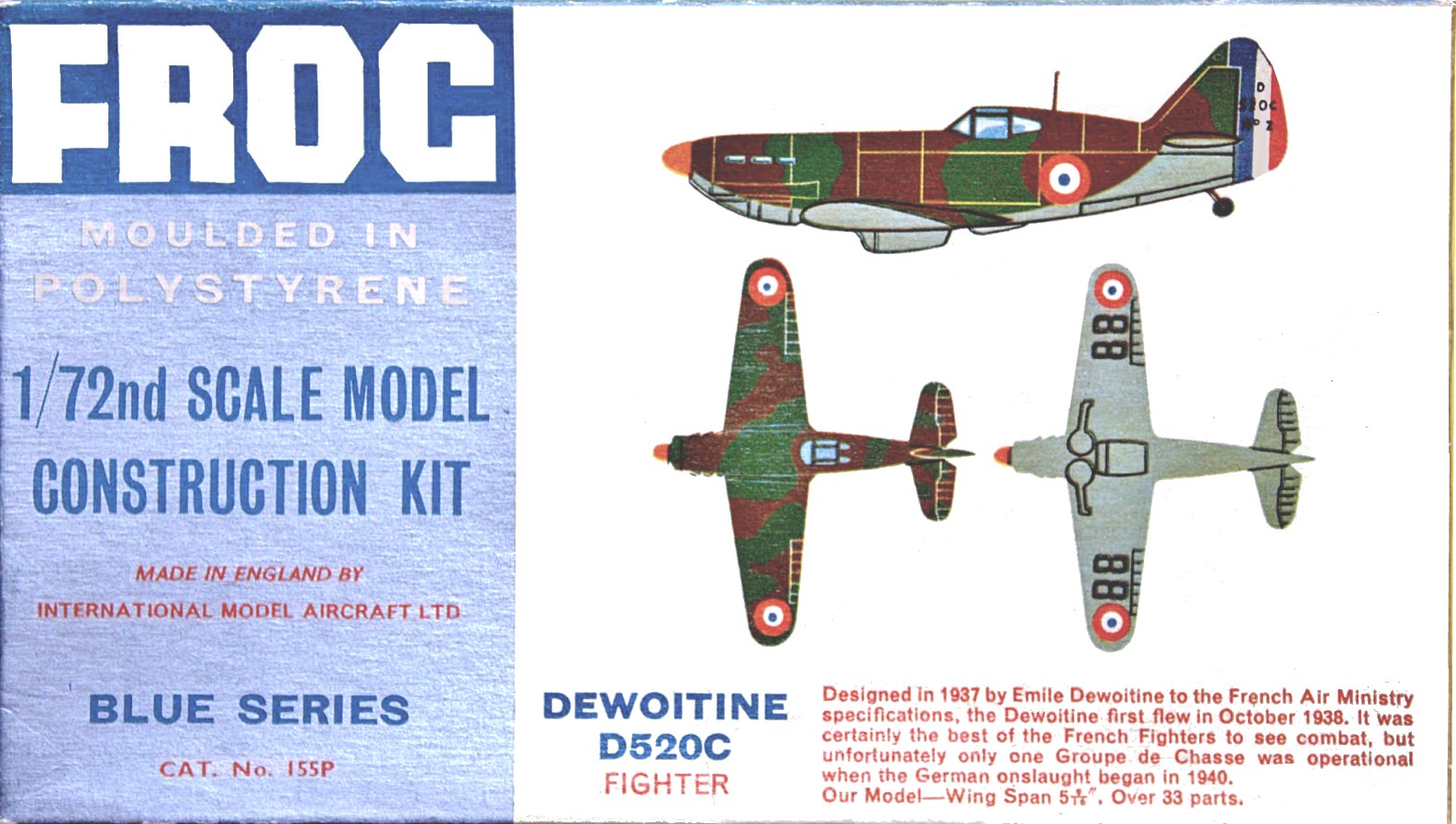

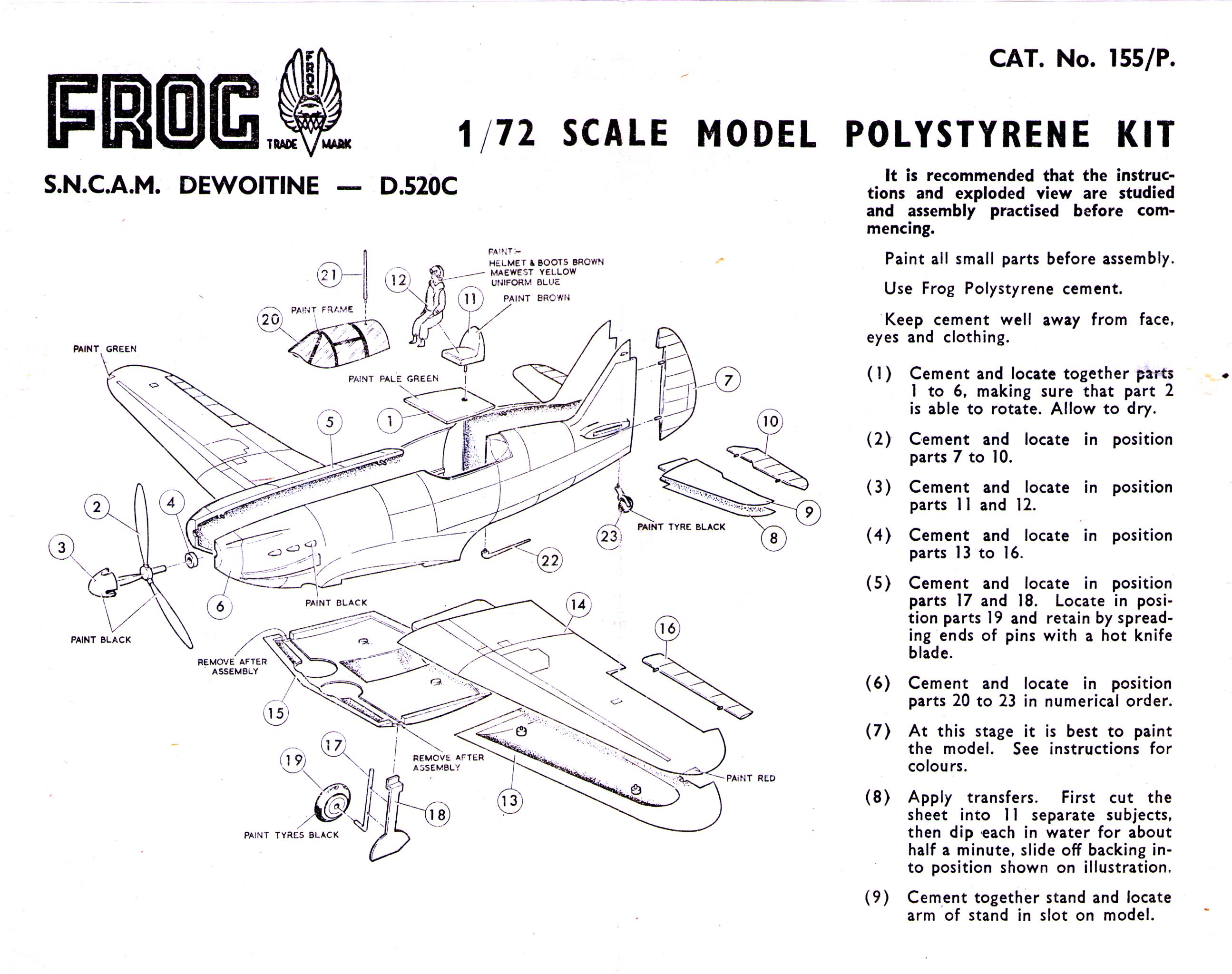
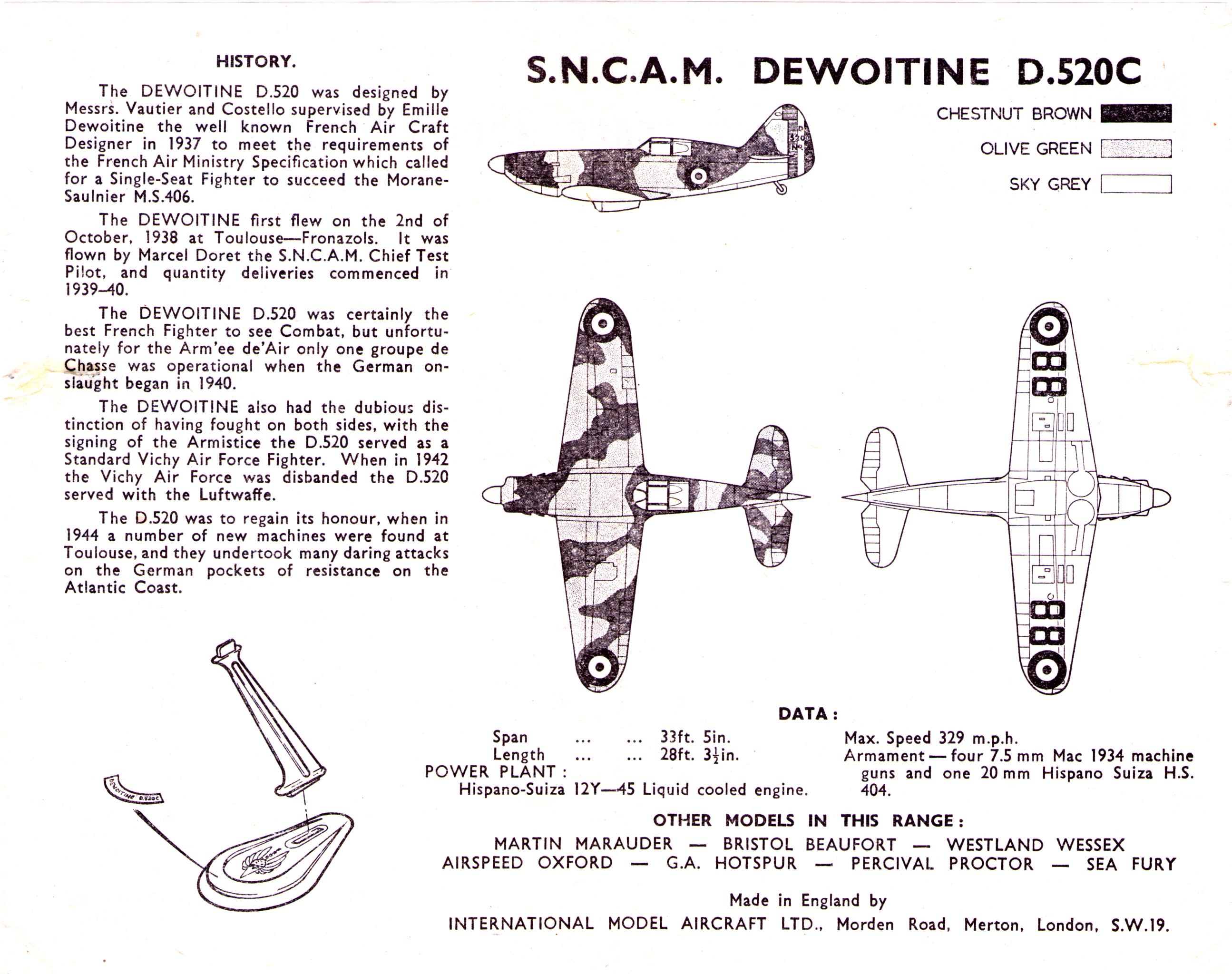
Trade Notes
Continuing their range of unusual subjects in the 1/72nd scale plastic model "Blue" series, Frog have introduced the Fokker D21 and Dewoitine D520C, each a 2/0d. kit and in Dutch and French markings respectively. We must congratulate International Model Aircraft on their enterprise in tackling these lesser known subjects and hope that sales will justify their bold move. With such novel types coming into the "Blue" series we wonder if we can expect to see Brewster Buffalo before long?
AeroModeller SEPTEMBER 1963 Vol.XXVIII No.332
"DEWOITINE D.520
Another recent addition to Frog's l/72nd scale range is the Dewoitine D.520, and although basically a very sound kit, it possesses some shortcomings. For instance, the chord of the main plane is an eighth of an inch too wide, there should be two air intakes beneath the nose, the circular panel below and slightly aft of the cockpit is a panel, and not the position of the national roundel which, when this was painted on the Fuselage side, was invariably situated further aft. D.520 No. 2 was the first true production aircraft of this type, and it is a pity that Frog saw fit to include this number on the transfer as. if used, it limits the camouflage finish that can be applied if, like the writer, the modeller is a stickler for accuracy.
The camouflage scheme and colours supplied are reasonably accurate for some aircraft, although the more usual scheme included grey in its camouflage pattern. The undersurfaces were pale blue—paler and bluer than the grey plastic used for this kit. Incidentally, the radio mast on the fuselage underside was hinged to lie flat when the aircraft was on the ground. For alternative colour schemes to the standard French 1939-40 finish, the yellow and scarlet striping of the fuselage nose, the fin and the horizontal tail surfaces applied to some Vichy machines at one time add to the attractions of the model (see photos), and among other air arms employing the D.520 was the Luftwaffe which employed this aircraft as a trainer. Luftwaffe machines normally sported standard finish, but Frank Hartman of Charlottesville, Virginia, came across an extremely interesting D.520 at a field near Brussels in June 1945. This aircraft was basically slate grey, but the upper fuselage decking and fin leading edge were a chocolate brown, and the underside of the fuselage, wing undersurfaces, and rudder were yellow. The radio call sign letters SV+GB were carried on the fuselage sides. Next month we will illustrate several alternative schemes for the D.520 in colour, together with a selection of Escadrille emblems.
Richard L. Ward
Flying Review 1963-11, Model Talks"
OVER THE COUNTER
The Frog Dewoitine 520 is a welcome stable mate for their Fokker DXXI and is quickly made up into a very clean-lined model of this famous French fighter. The only noticeable omission is the lack of two flush air intakes under the engine cowl, which can either be painted or filed out before assembly (see our photo). A little difficulty was experienced in getting the top and bottom centre section leading edges to line up correctly, but this can be facilitated by cutting away the moulding pieces across the u/c cut outs before assembly, rather than after, as instructed. Pieces of card can be used to advantage for filling in large gaps in radiator, u/c wells, etc.
Model aircraft, January 1964
TRADE NOTES
The Frog 'one-a-month' programme of distinctively "different" 1/72nd plastic scale kit subjects, plus the efforts of Airfix, Revell, and Aurora imports by Paycraft have made this month's news a veritable treasure store for fireside modellers. One wonders if the rush to produce at such a rate is the reason for inaccuracy and awkward fits evident on all these new models. Seems a tremendous shame that when the cost of launching such a kit approaches £1,500 in design and tooling alone, more effort is not made to see that the basic aeroplane is right. Establishing the true shape of any aeroplane is a tough task; but certainly not one which is insurmountable as we try to prove each month with our own drawings. It takes about 3 months research and up to six months of spare time draughting for Aeromodeller contributors to produce each of the scale plans in our range, and we don't usua'ly commit the drawing to print until we know it matches the manufacturers component dimensions, water and buttock lines, airfoils and general data. Comparison of the two representations of the 'Douglas Boston III' will best illustrate our criticism. If each is supposed to be a true scale model, then which has the right fuselage cross section, nose shape, etc.? We can only speak from study of a fat photo file and say that each has its faults ; but the deciding criteria could only be Douglas's line drawings. Unfortunately this kind of information is often no longer available.
To Frog goes our acclaim for a most attractive pair in the 'Fokker D. XXI' and 'Macchi 202'. Each can accept extra titivation, and the Italian fighter is a shade overscale but their main appeal is that they can be decorated in so many different schemes. December's contribution to the Frog 2/- series is another Frenchman, the 'Morane Saulnier 406C1'. Confusion is bound to arise with the existing 'Dewoitine 520' kit of similar size and configuration: but this all makes for extra interest.
Frog Dewoitine D 520 accurate in outline, and an unusual subject in ths 2/-series,
AeroModeller FEBRUARY 1964 Vol.XXIX No.337
Dewoitine D.520C-1
| 155P | 1963-1966 | E(B) | } 130000 | 1xFrench AF |
| F155 | 1966-1969 | F2(K) | 1xFrench AF |
| F222F | 1969-1974 | J2(K) | 200000 | 1xFrench AF & 1xItalian AF |
FROG model aircraft 1932-1976, R. Lines, L. Hellstrom
|
|
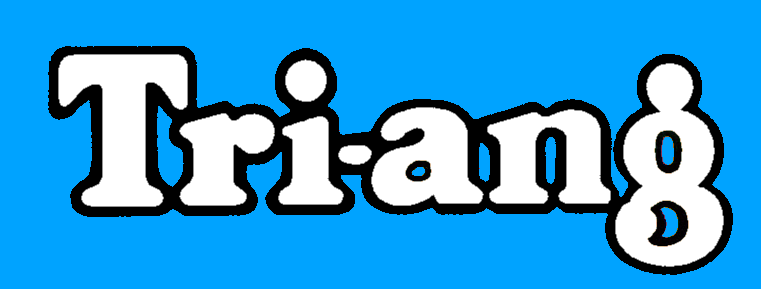
Tri-ang 155P Dewoitine D 520 C, Lines Freres - S.A.Calais, 1964

|

Air Lines 3901 Dewoitine D520, Jo Kotula paintwork, Lines Bros Inc., 1964

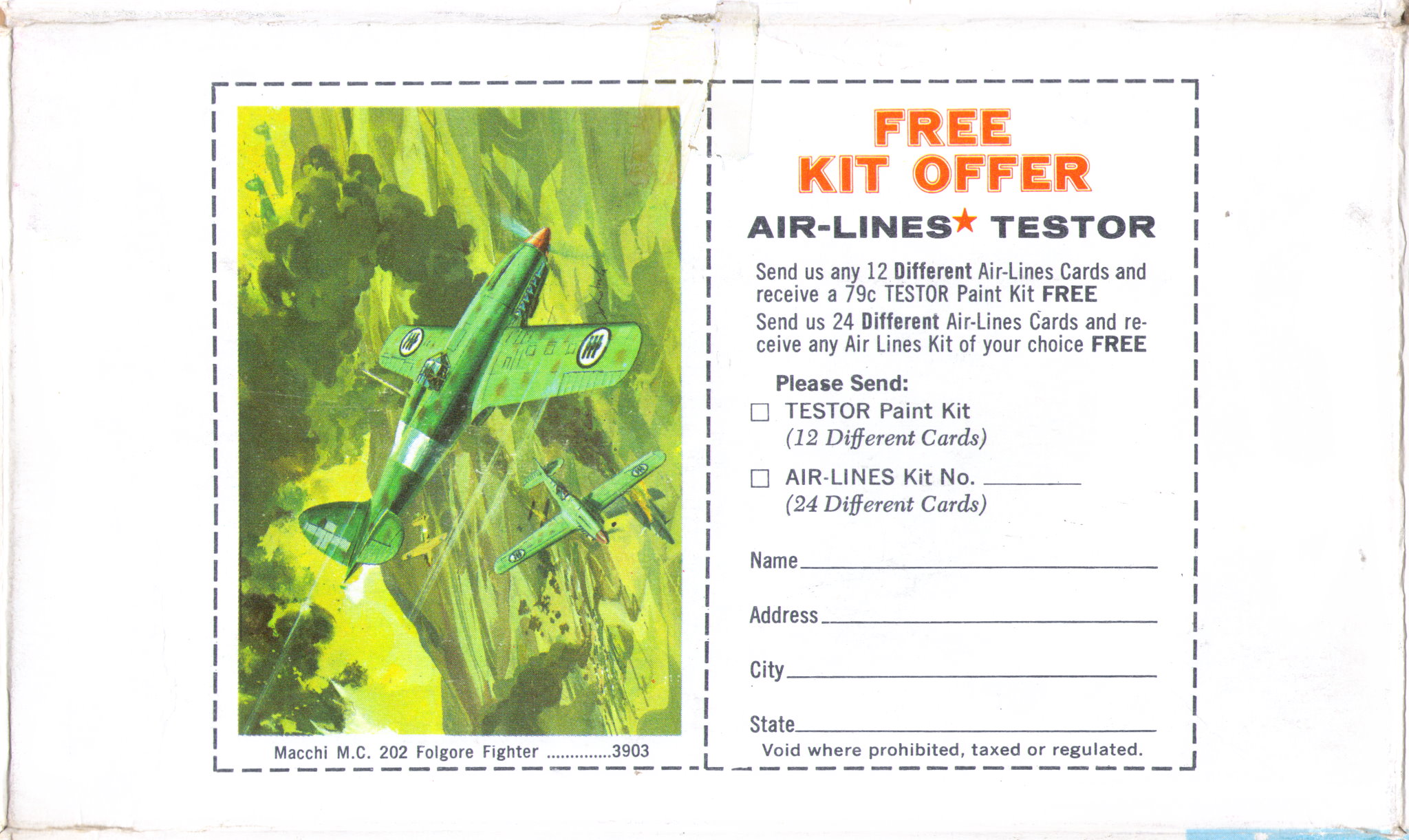


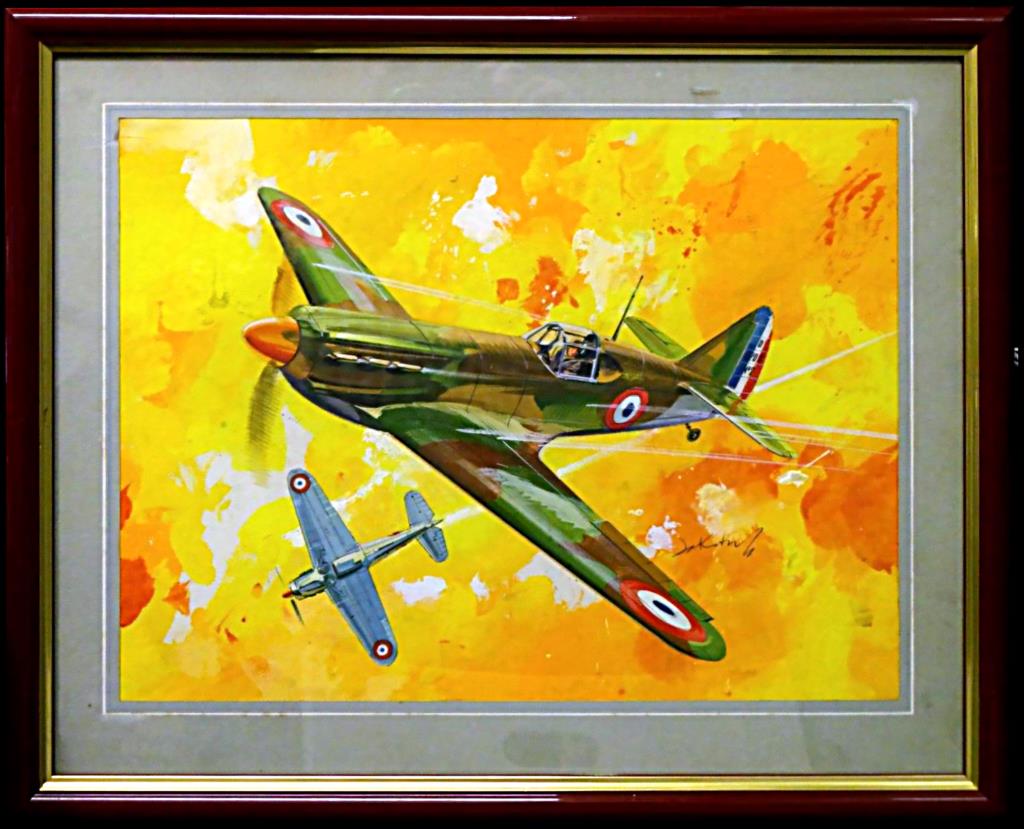

|
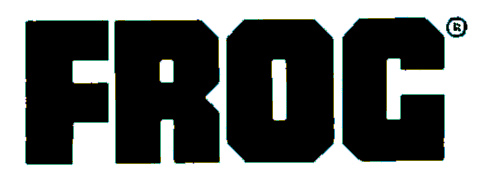

Black Series F155 Dewoitine D520 Fighter with Gold Tokens, Rovex Scale Models ltd, 1965
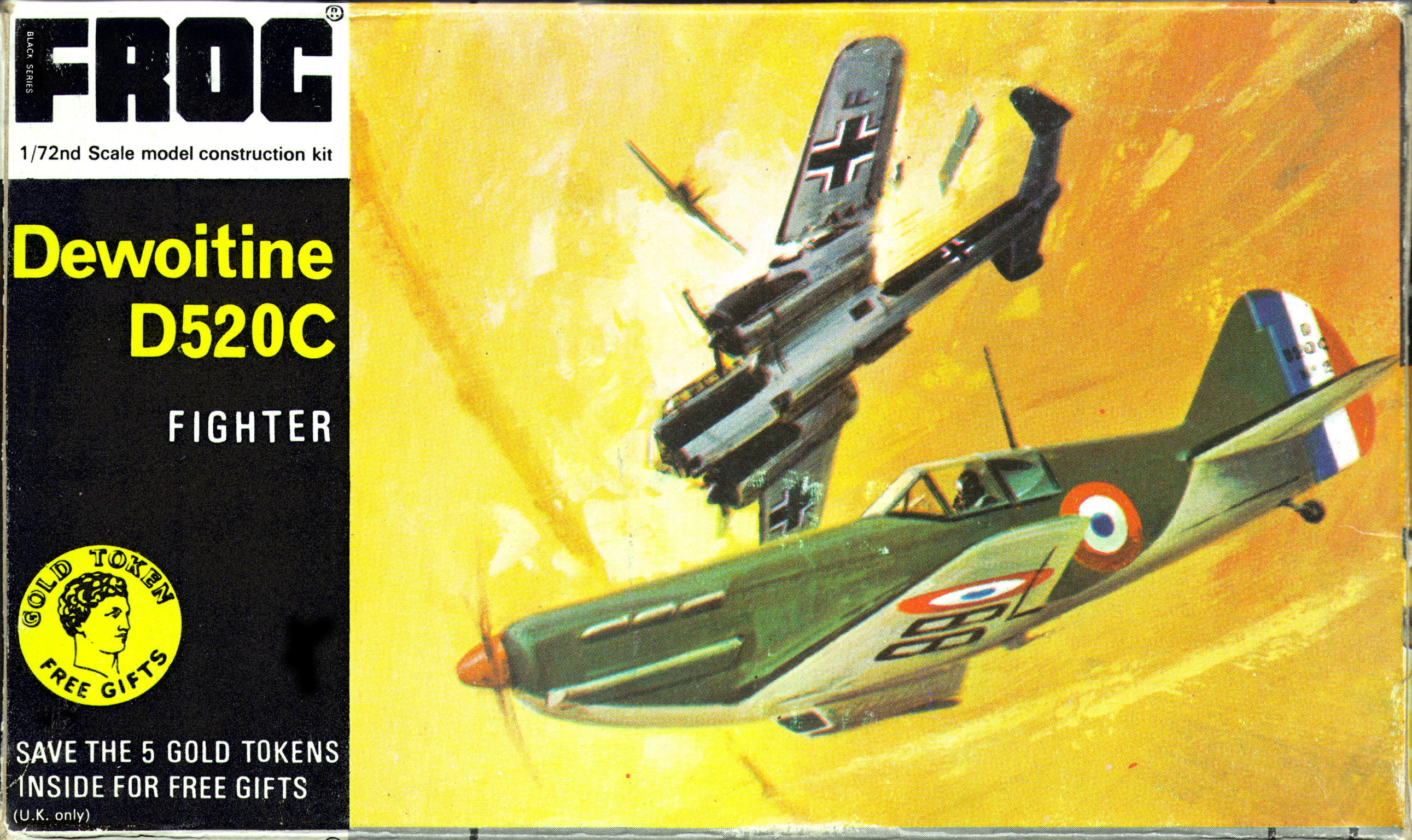






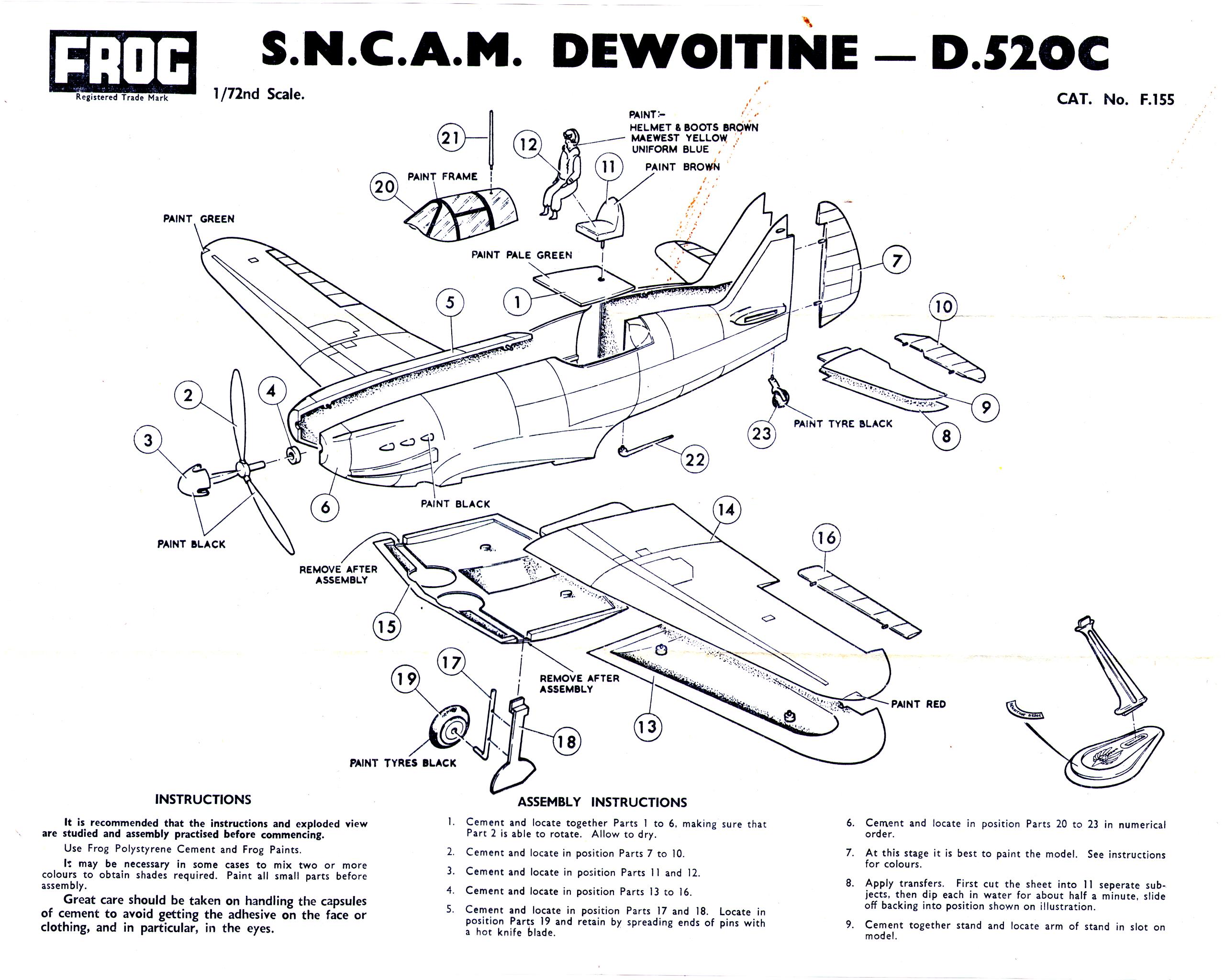
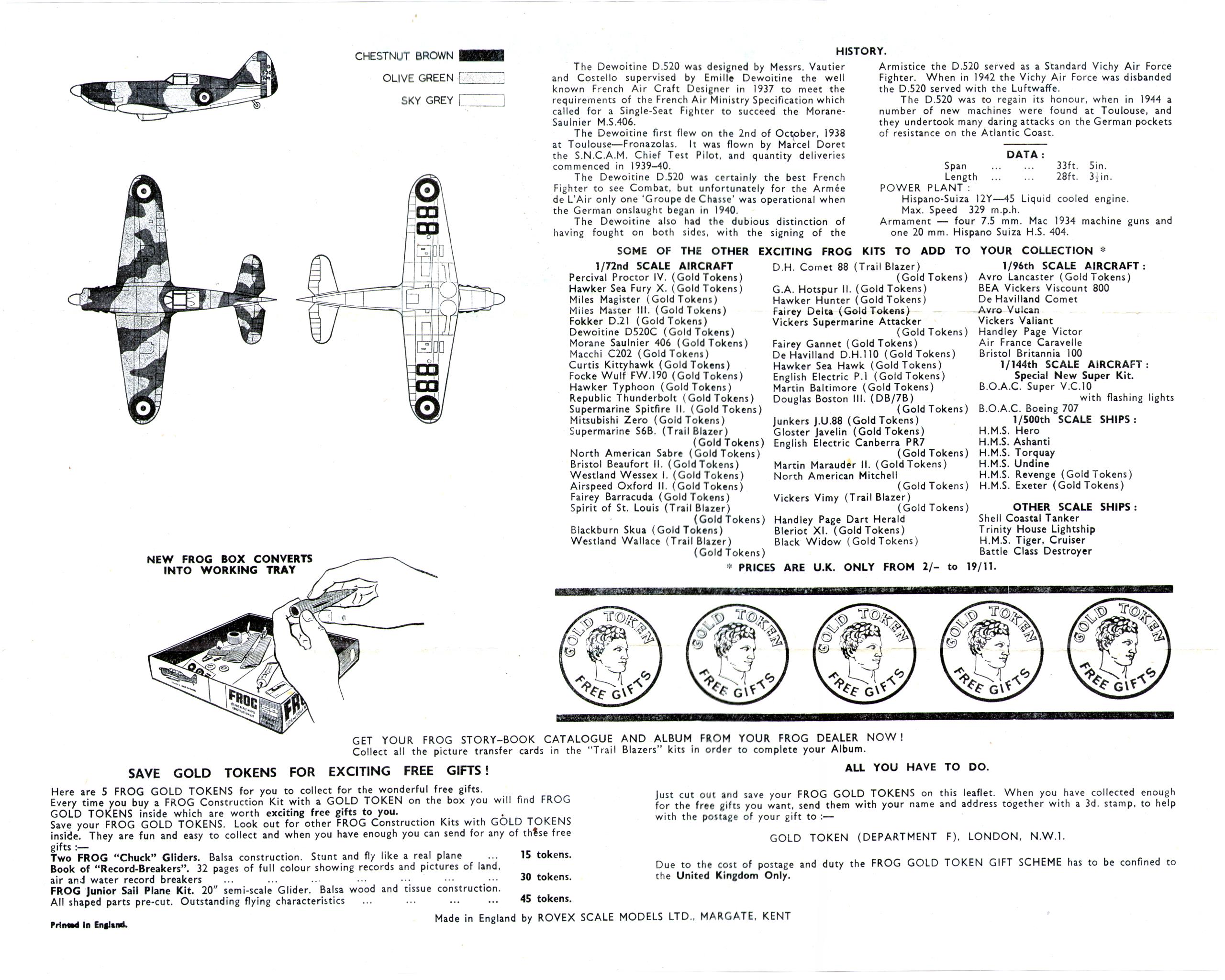
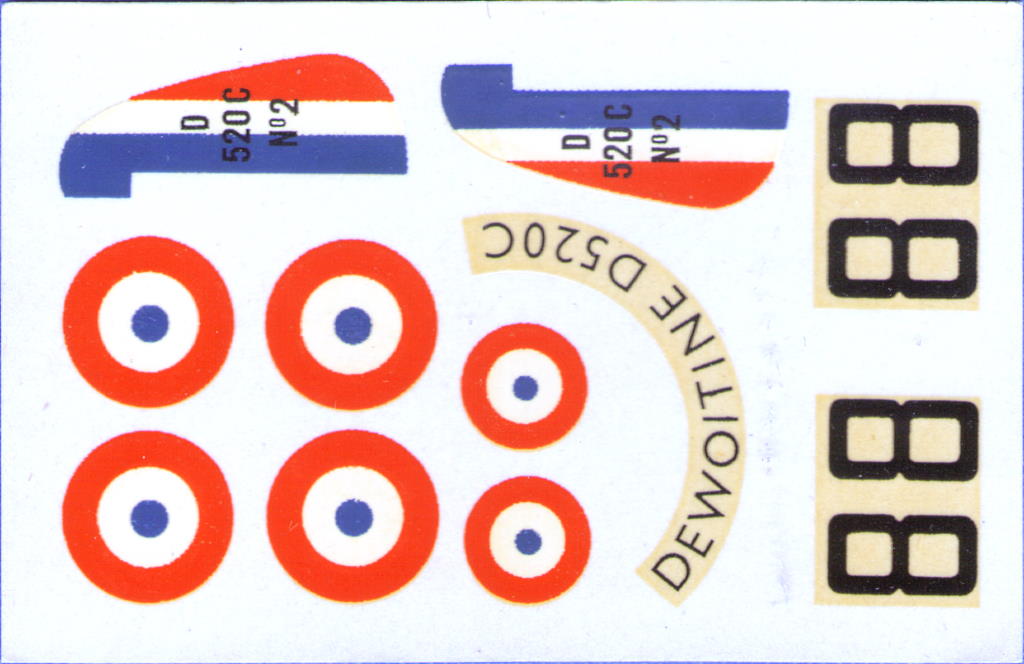
|

Black Series F155 Dewoitine D520 Fighter, 1966
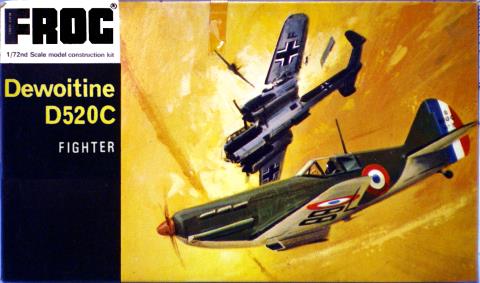
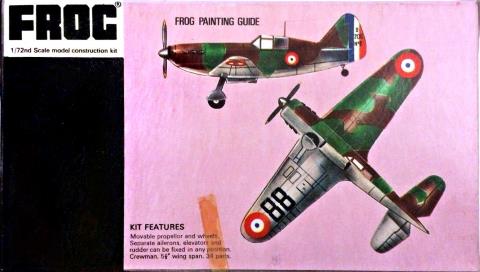


|

Bagged FROG F222F Dewoitine D520, 1970

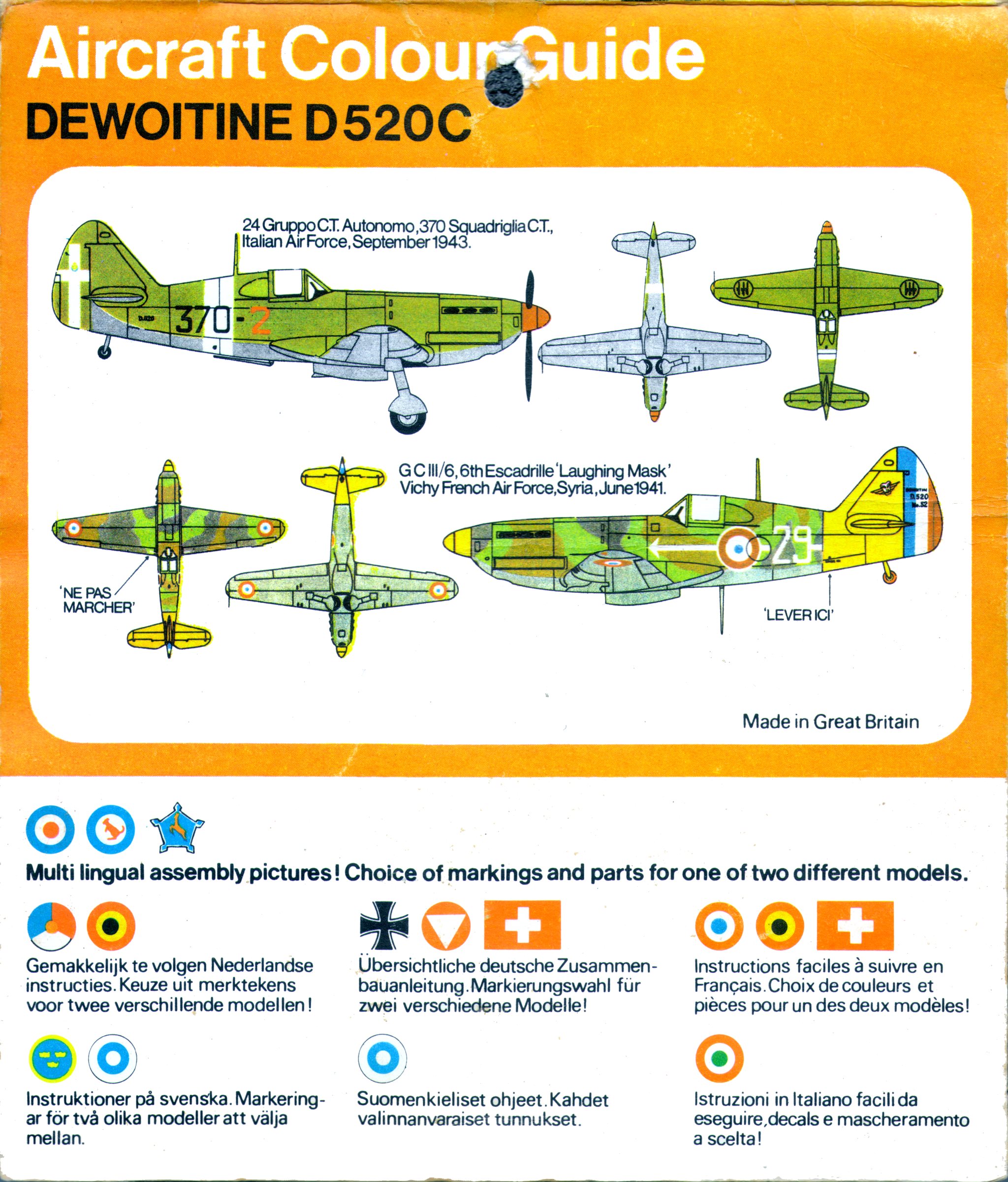


|
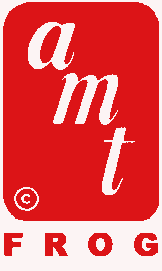
Dewoitine D520 AMT 3956 Famous fighters series II combo kit, 1970
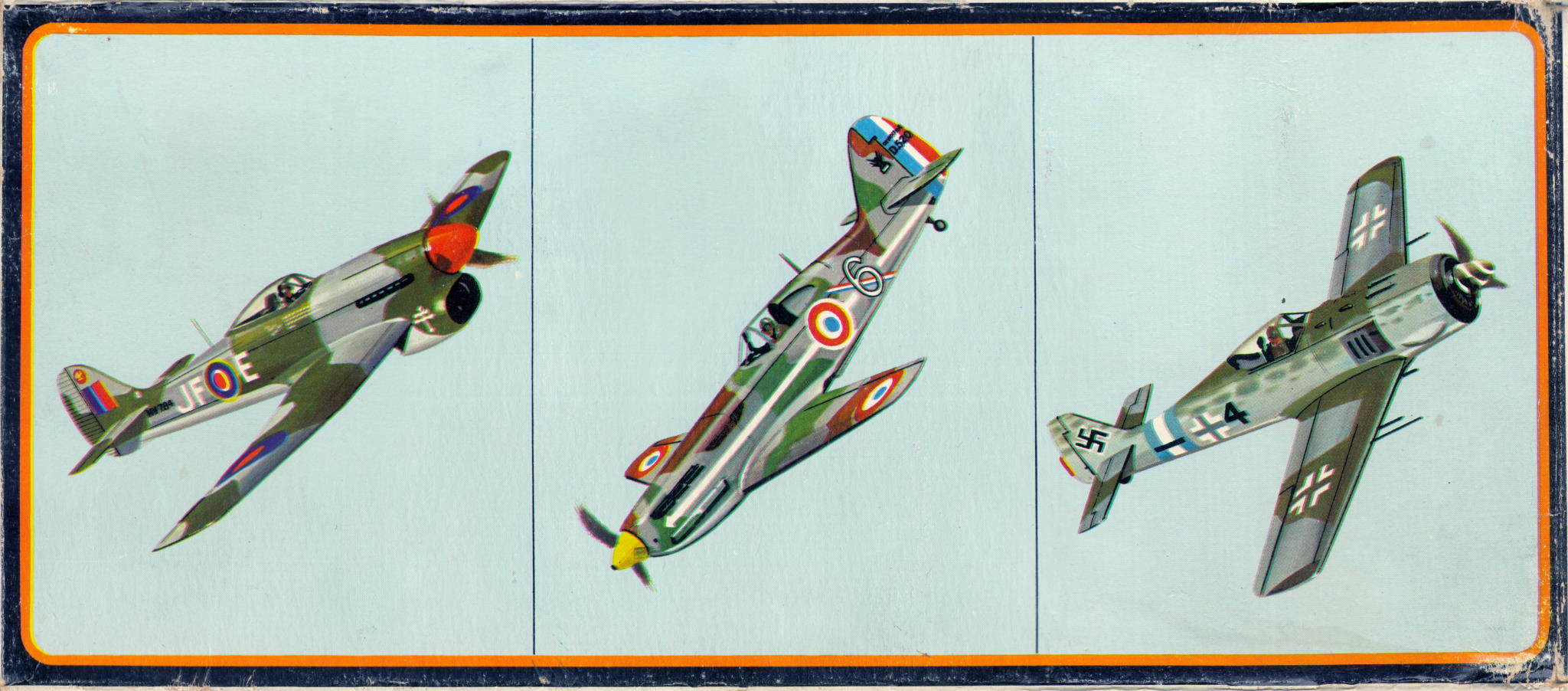
|



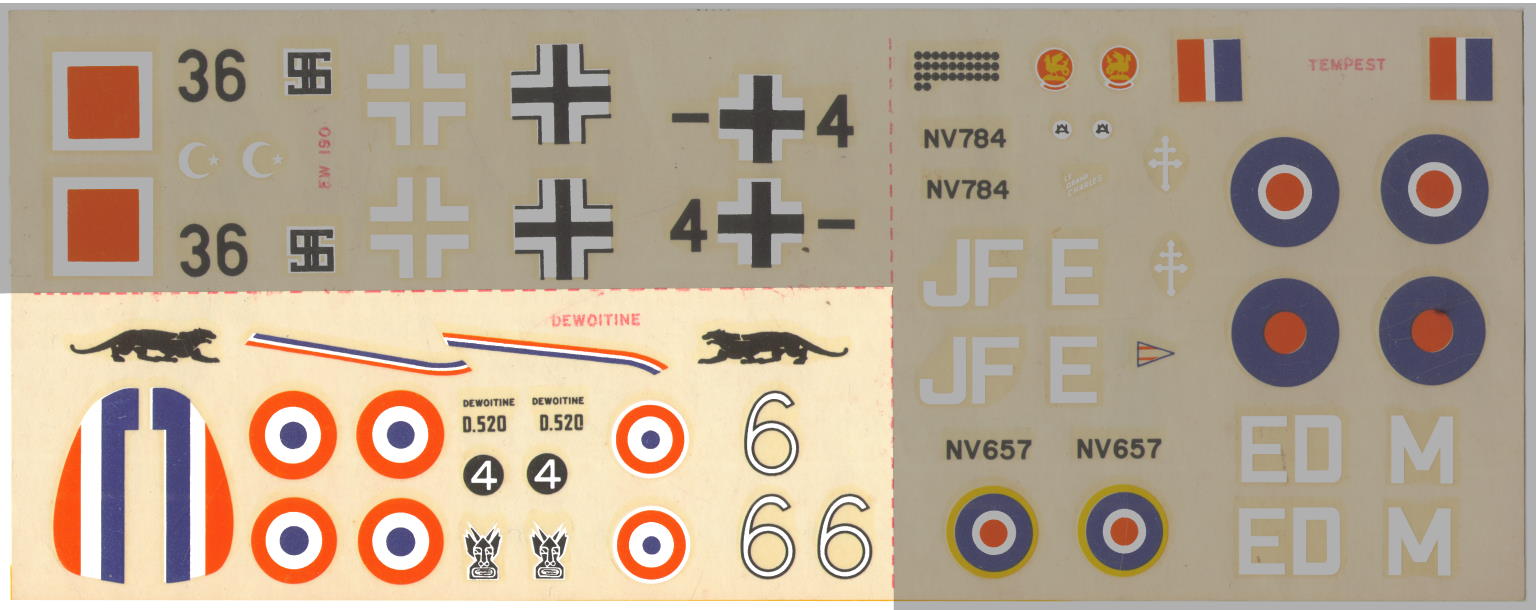
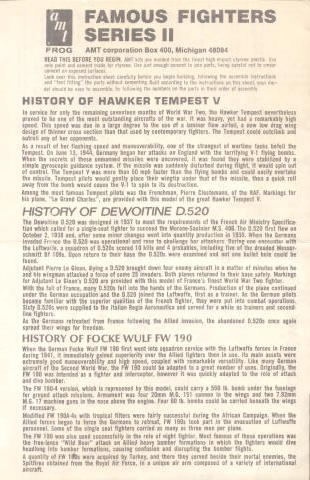
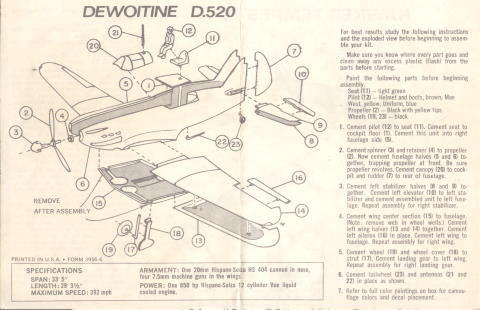
AMT Frog
AMT Corp., 1225 East Maple, Troy, MI 48084, USA.
Period: 1967-1970
AMT was, and has continued to be, a company specialising in car and truck kits. By the mid-1960s, they had become interested in diversifying into aircraft kits as well, and were thus a natural new partner for Lines Bros, after the demise of Air Lines. AMT sold the kits under the AMT/Frog label and, apart from a batch supplied by Rovex in 1968, did all moulding themselves, using Frog moulds brought over from England.
The original plans called for some 40+ Frog kits to be released by AMT, but eventually only 23 different kits got produced. While having the moulds with them, AMT had several of them (P-47, FW 190 etc.) cleaned up by removing engraved markings and other heavy surface detailing...
At first all kits had kit numbers type 0000, but around 1968 this was changed to A-000 for both older releases and new items. Most artwork and decals were changed at the same time.
| 1st no. | | 2nd no.
| | 3956 | + | A-642 | Famous Fighters Series II3 |
3 Hawker Tempest, Dewoitine D.520 and Focke-Wulf FW190A
FROG model aircraft 1932-1976, R. Lines, L. Hellstrom
|
|
MODEL ENTHUSIAST
This month's colour subject
Few would deny that French aircraft designers have manifested a highly creative ability throughout the annals of aviation and in few fields more so than that of fighter development. While much of the world accepted the braced and strutted biplane of wooden or mixed construction mounting a pair of rifle-calibre machine guns, the Societe Aeronautique Francaise — Avions Dewoitine was producing cannon-armed all-metal low-wing fighter monoplanes. Unfortunately for the Armee de I'Air, the tempo of international fighter development accelerated to such a degree in the mid 'thirties as war clouds gathered that it outpaced France's efforts, and from being in the vanguard, French fighter equipment came a poor second to that of the other principal belligerents when war began in September 1939.
By the time that the Wehrmacht launched its onslaught in the west in May 1940, however, the Armee de I'Air had begun to take into its inventory a new fighter that had been designed under the leadership of Robert Castello of the Dewoitine organisation. This, the D.520, lacked nothing in quality, but what its manufacturer, the Societe Nationale de Constructions Aeronautiques du Midi (SNCAM), could not offer the Armee de l'Air was adequate quantity sufficiently quickly. A neat, agile little warplane which, if unable to compete with the opposing Messerschmitt Bf 109E on the score of level speed, possessed a definite edge in manoeuvrability and acquitted itself well in the desperate fighting that took place in French skies during that early summer of 1940.
The D.520 has fared rather better than might have been expected with regard to kits, there having been three over the years, although it is somewhat doubtful whether more than one of them is to be found in the shops today. First on the UK market with a D.520 kit to l/72nd scale was Frog — the same kit being issued on the US market by AMT — and this was quite good in its day, being reasonably accurate if somewhat lacking in detail. Unfortunately, this is one of the many Frog kits that have disappeared from the stockists' shelves, but the Heller kit to the same scale and which appeared rather later should still be available, although some persistent searching may be necessary to find it. The Heller kit is superior to that of Frog in almost all respects, and is possibly the nearest that we are ever likely to get to a definitive kit of the Dewoitine fighter. Moulded in Heller's usual medium grey plastic, it is accurate, to scale and possessing good surface detailing, let down only by a sparse cockpit interior and a poor decal sheet.
The third D.520 kit, another Heller offering, was intended to represent it at 1/50th scale, but it is so inaccurate that it demands a major conversion job which is almost tantamount to scratch building if the appearance of the full-scale original is to be simulated — this is not merely a case of the kit designer having failed to capture any subtleties of line! In short, this is such a poor kit that we could not recommend it to even the most avid collector in this particular scale and we find difficulty in equating this kit with the company that has been responsible for so many fine products to 1/72nd scale.
F J HENDERSON
Air Enthusiast 1975-05 vol.08 no.05
|
|
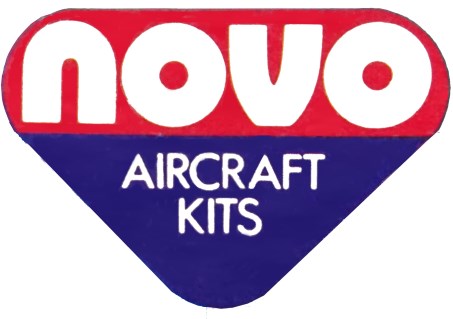
Dewoitine D520, NOVO Toys Ltd F155 Cat.No.76002, 1976
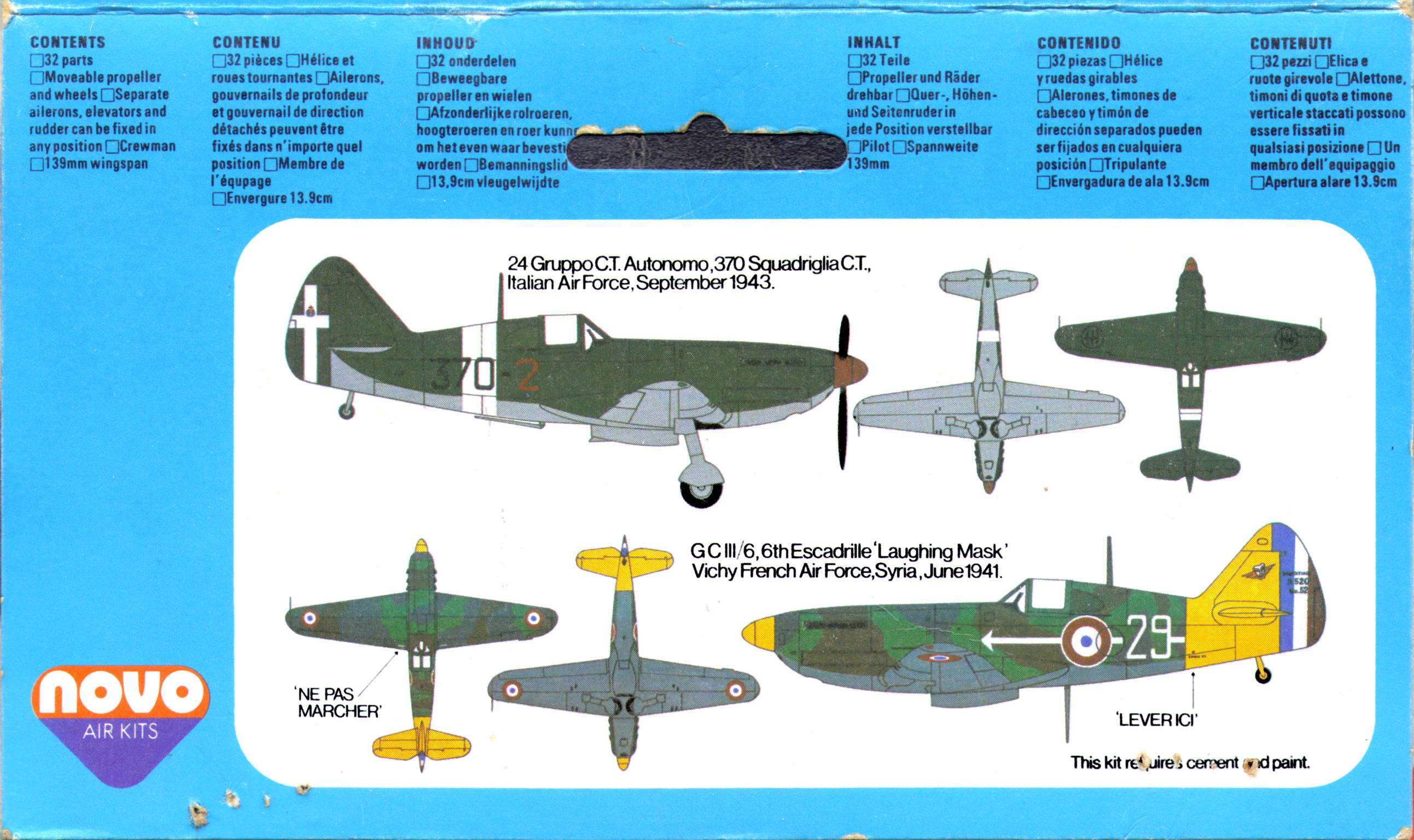
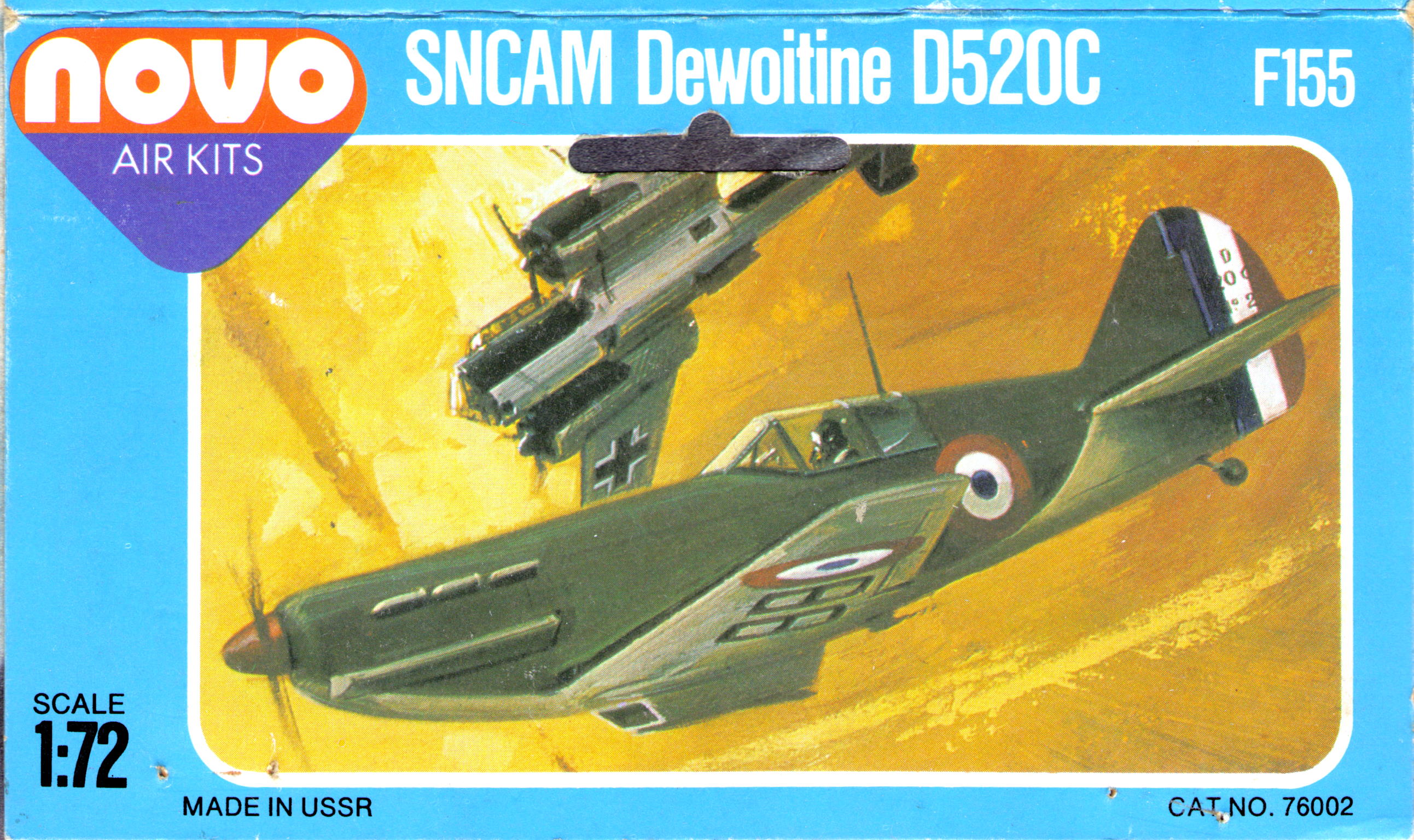

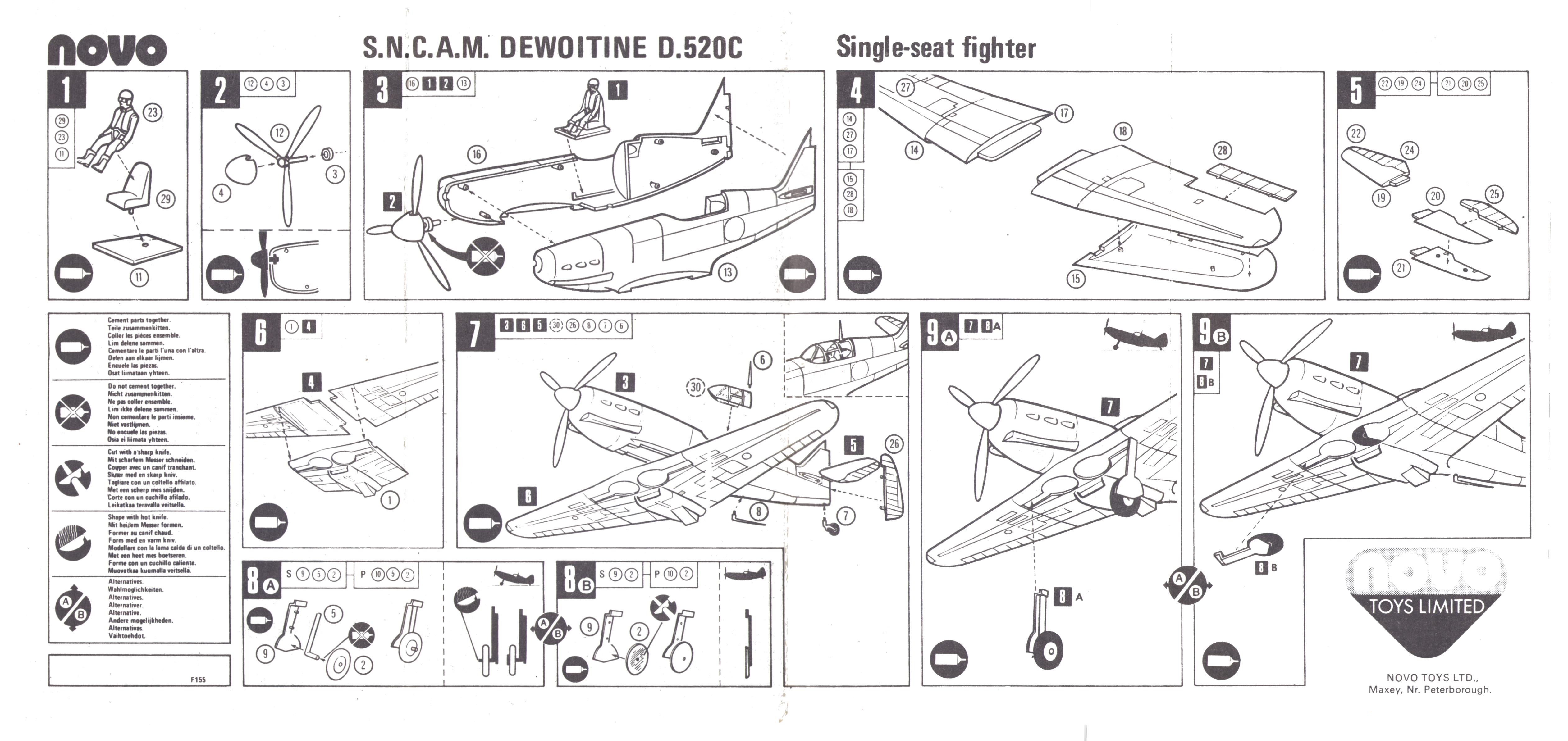

| | 76002 | Dewoitine D.520 | 70000 |
FROG model aircraft 1932-1976, R. Lines, L. Hellstrom
|
|
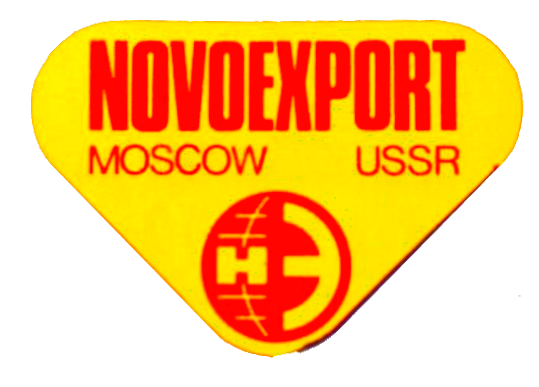
Dewoitine D520, Novoexport, 1/72, F155, test issue
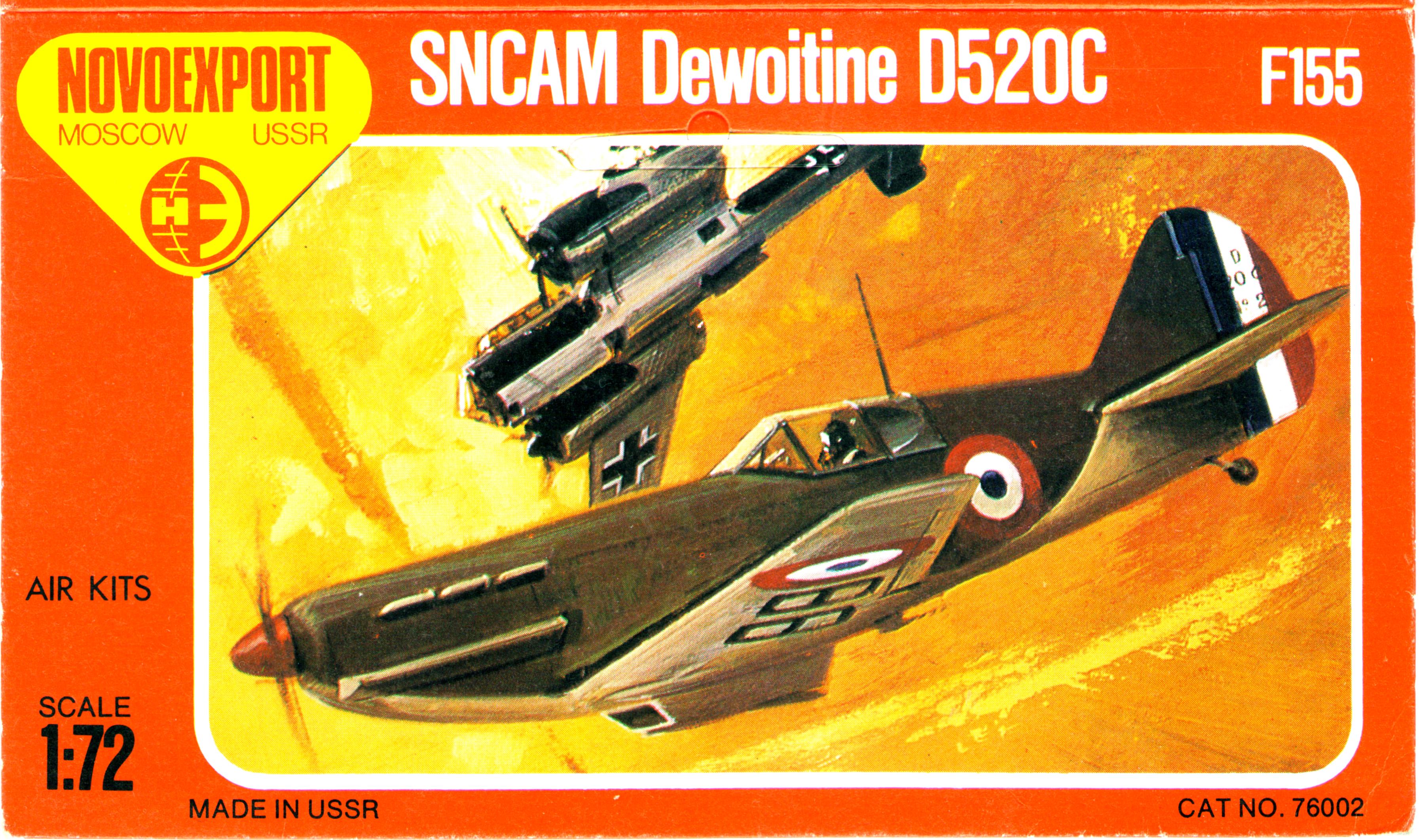
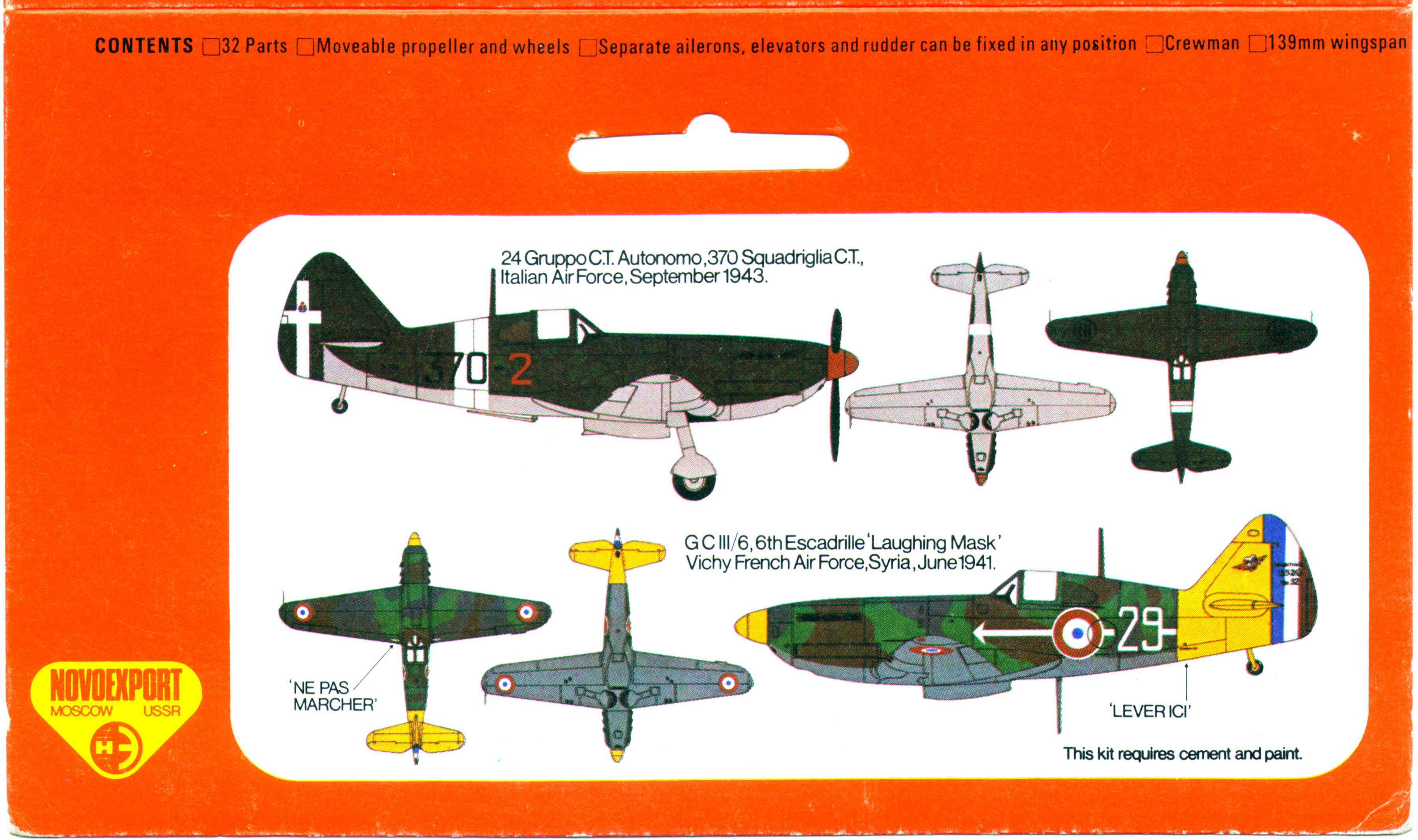
|
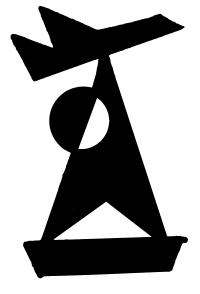
Донецкий Ф155 Dewoitine D520 1/72, 1977-1990
late 1970-s

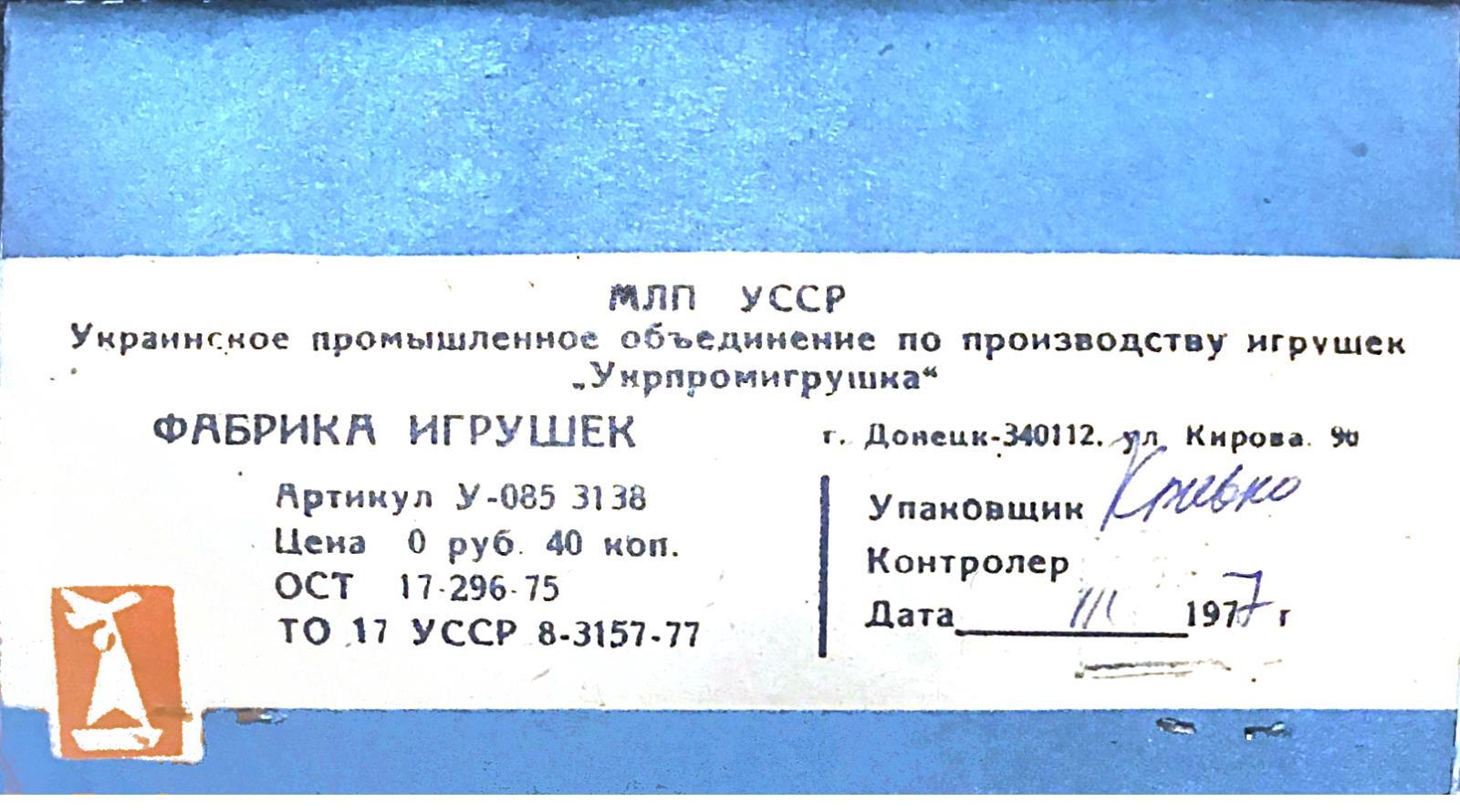
1980-s
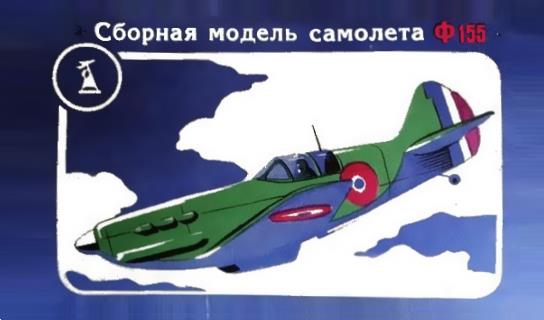

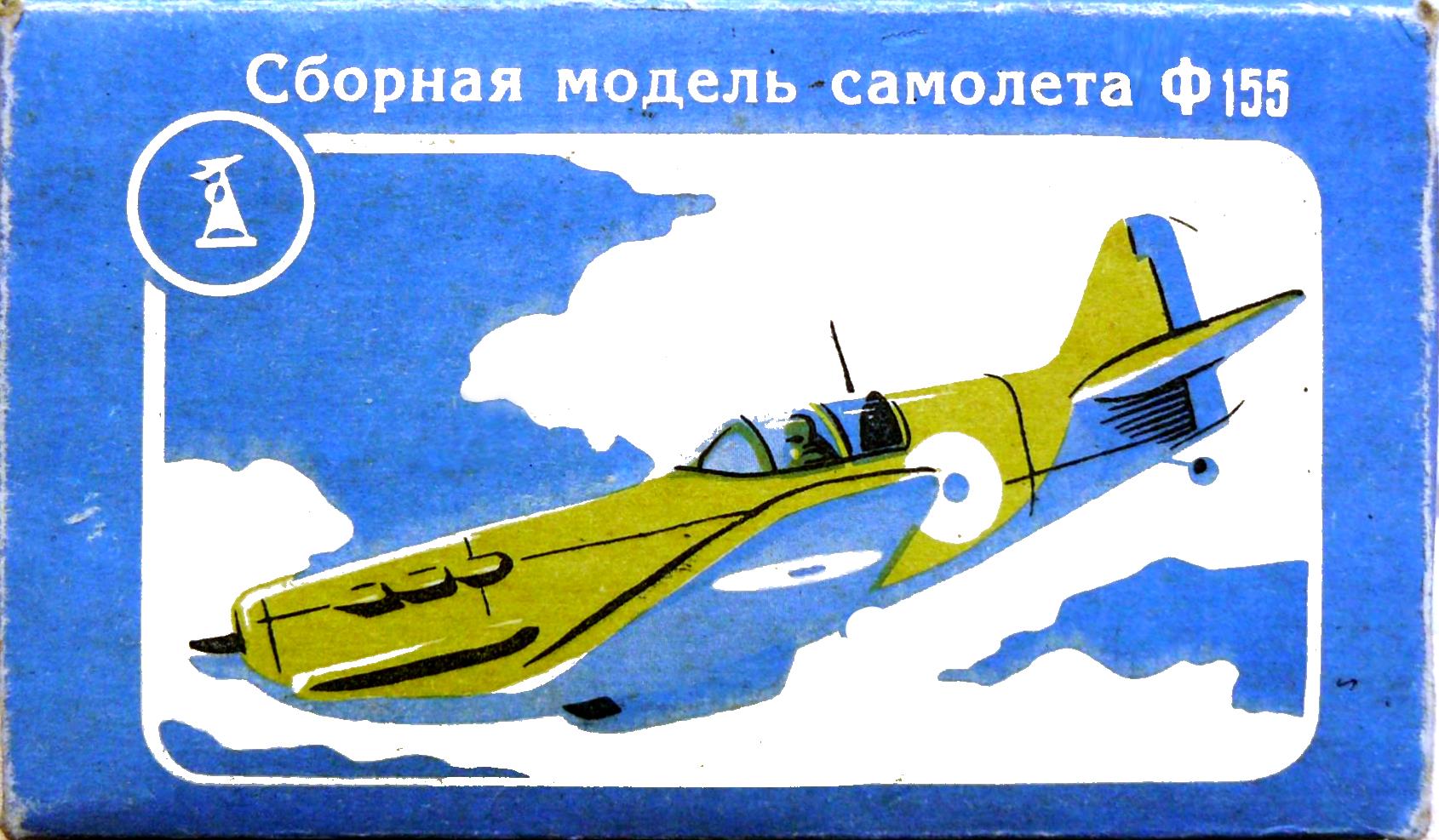
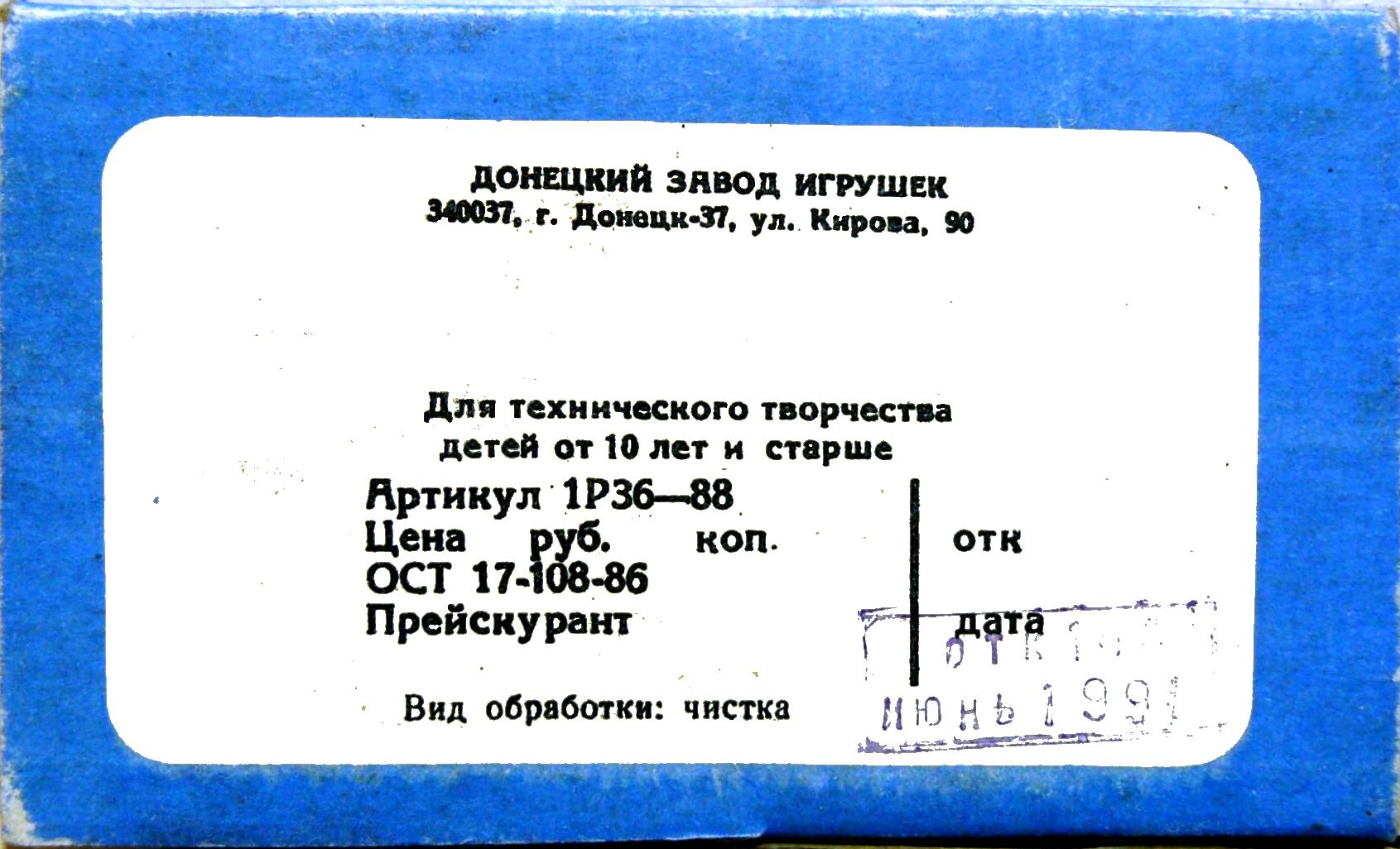
1990-s

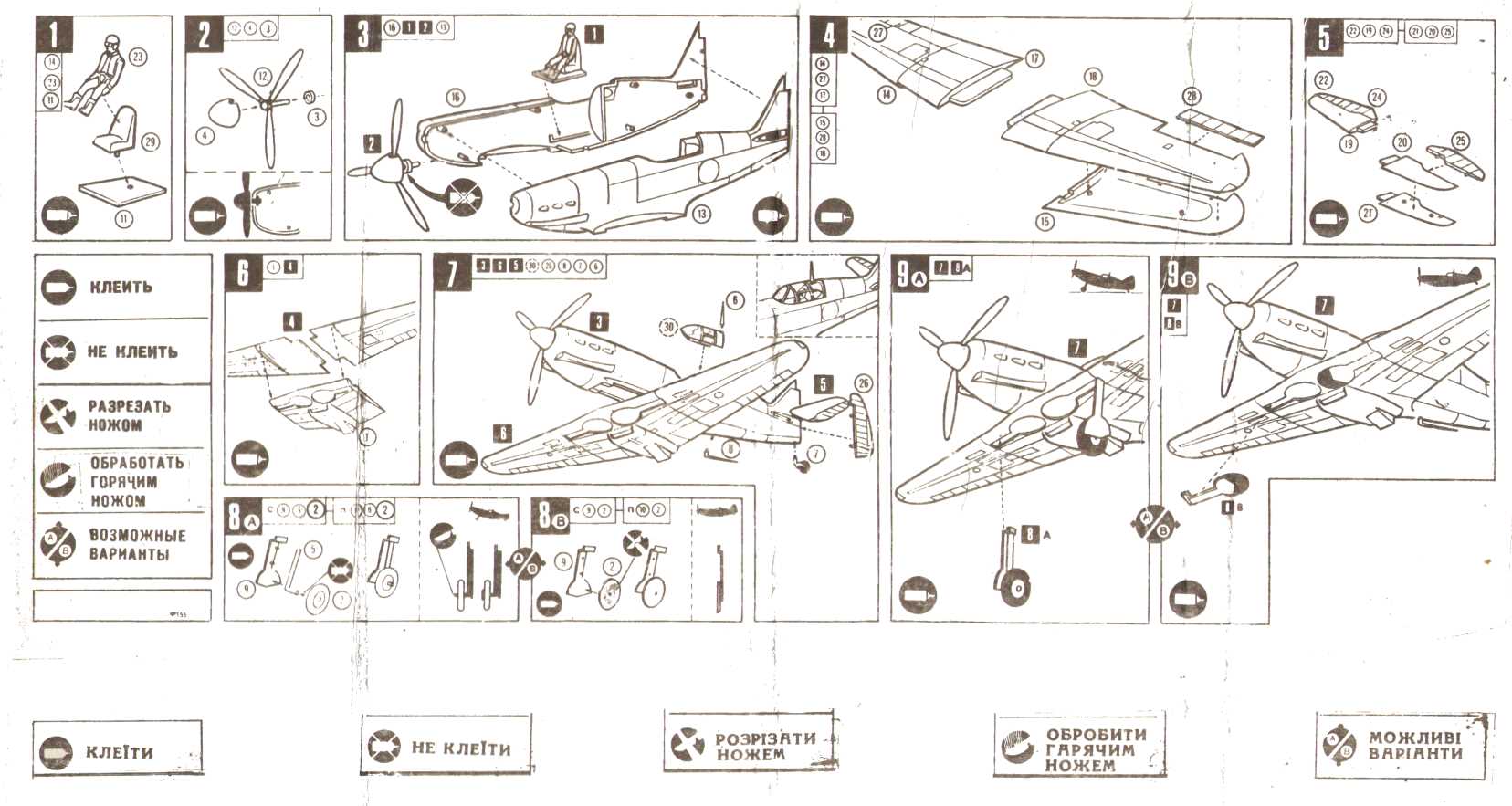
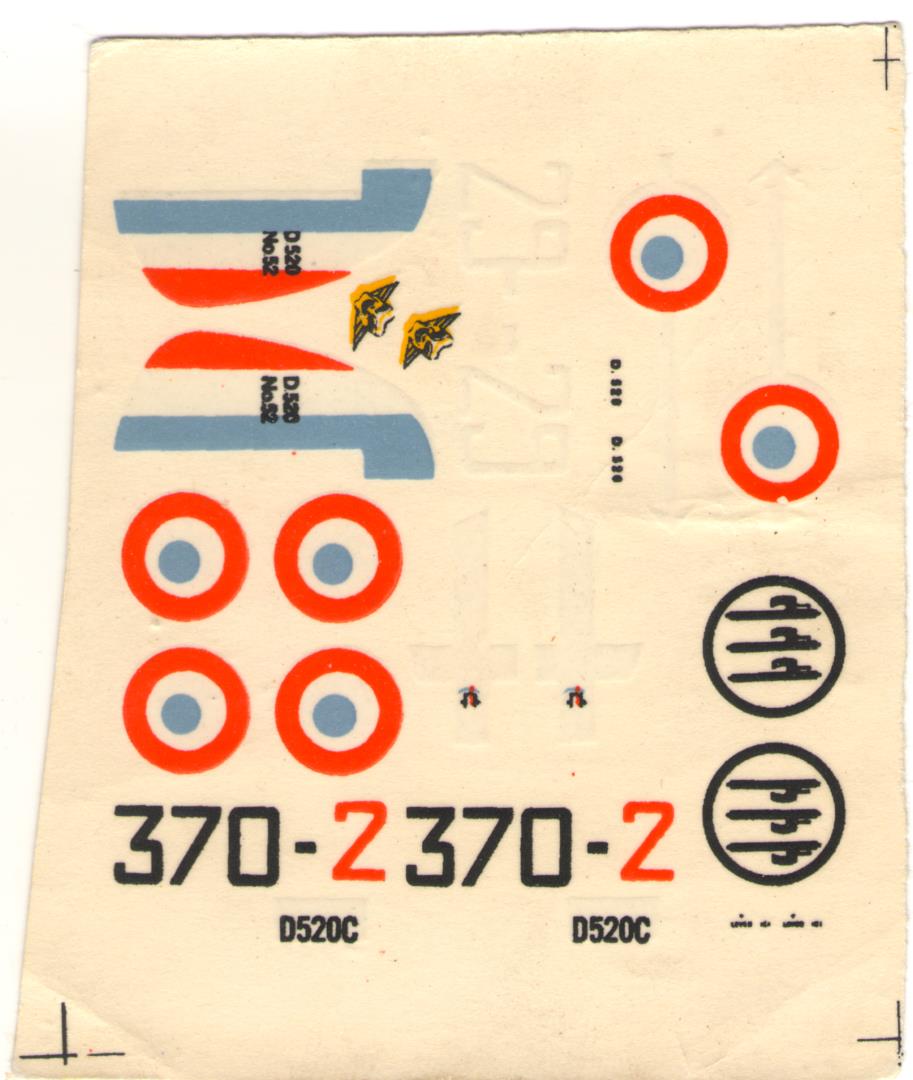
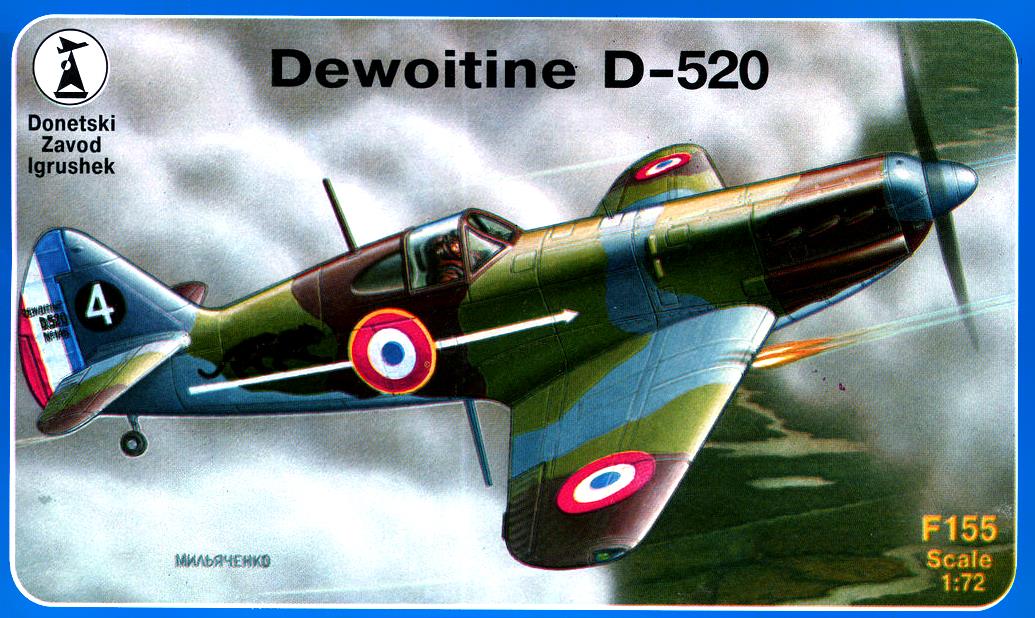
В конце 1993 г на тридцатилетний юбилей модели минский журнал «Аэроплан», появившийся всего за несколько
месяцев до момента публикации рецензии, предъявил разработчикам модели огромный список упрёков:
МОДЕЛИ НОВО
Девуатин D.520: Самолёт и модель
Dewoitine D.520, несомненно, был одним из лучших французских истребителей. Однако о его «Фроговской» реплике (модель НОВО—F155) этого не скажешь. На наш взгляд, эта модель одна из худших в коллекции английской фирмы. И это удивительно, поскольку пресс-форма была разработана отнюдь не на заре модельного дела, а в 1969 году. К тому же, и реальный самолет по сей день сохранился в парижском Musée de l'Air, было на что посмотреть, с чем сравнить. Но разработчики, допустив серьезные промахи, пролетели, так сказать, «как фанера над Парижем».
Взять, к примеру, фюзеляж. Он короче своего прототипа (естественно с учетом масштаба) на целых 7 мм! На разницу в размахе при таком положении дел можно, видимо, и не обращать внимания — какие-то 3 мм для каждой консоли.
А кроме этого:
— совсем отсутствует воздухозаборник маслорадиатора;
— неверна «конструкция» выхлопных патрубков;
— мачта верхней антенны не на своем месте, впрочем, и нижней — тоже;
— руль направления мал по площади;
— крыло выдвинуто почти на 2 мм, а элероны шире на 1 мм;
— стойки шасси смещены вперед на 3 мм;
— диаметр колес меньше необходимого на 1 мм;
— вилка хвостового колеса — не той конструкции;
— подвижный совок тоннеля радиатора уже на 2 и длиннее на 2,5 мм;
— совершенно неверно имитирован фонарь кабины пилота (особенно его задняя секция);
— лопасти винта длиннее на 1,5 мм.
Все это выясняется, так сказать, при поверхностном знакомстве с моделью. Ну, а если проверить сечения, взять в руки штангенциркуль? Пожалуй, единственная деталь, не требующая переделки или замены— кок винта.
Так стоит ли браться за эту модель?
Можно, конечно, удлинить фюзеляж, нарастить крылья, передвинуть стойки шасси и переделать все остальное. Можно, если очень хочется. Но, видимо, лучше потратиться и достать чешскую модель фирмы «Шмер» (или французской фирмы «Эллер», что, в общем-то, одно и то же).
Хотя ...если на НОВОвский «Девуатин» посмотреть метров эдак с пяти, да еще прищуриться — то, вроде, похоже!
Девуатин D.520 в миниатюре
1/72
FROG/НОВО
Heller/Smer
Skybirds(vac)
Дмитрий Агатонов, Сергей Сергеев
Аэроплан №4, 1993 ноябрь-декабрь"
|
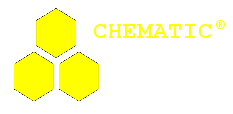
Chematic/Gomix 016 Dewoitine D520 1/72, late 90-s
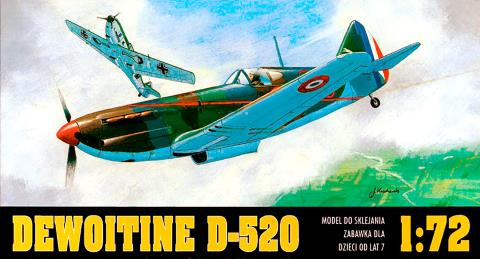
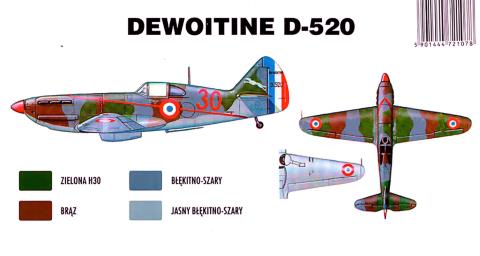
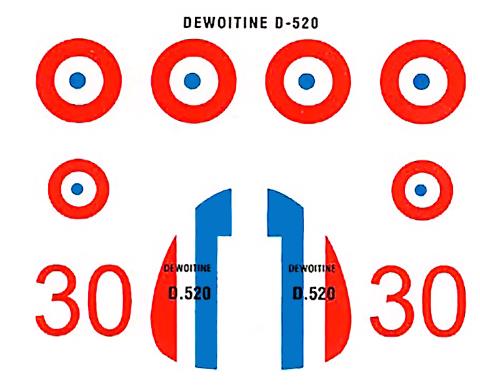
|
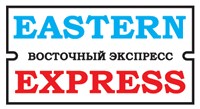
Dewoitine D520 Eastern Express 72280, 2006-
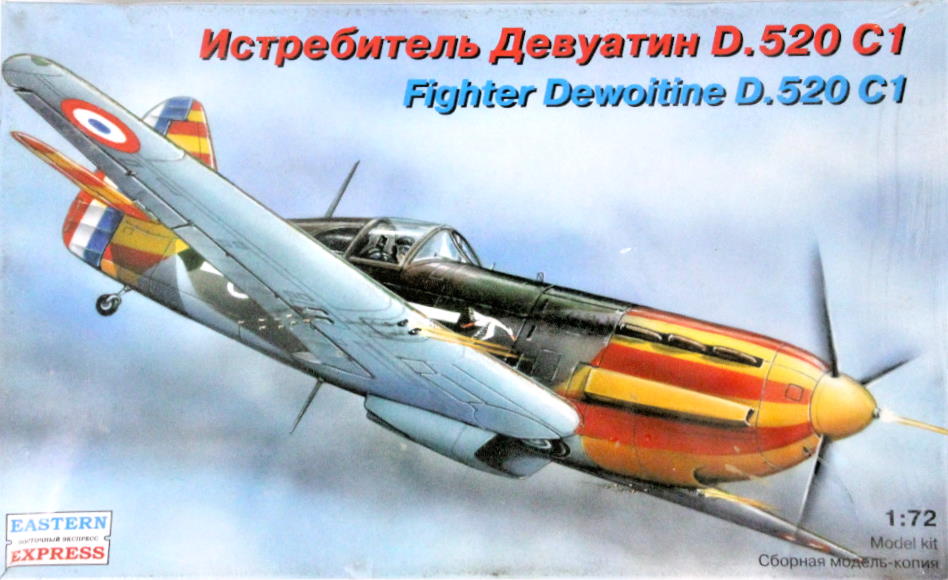
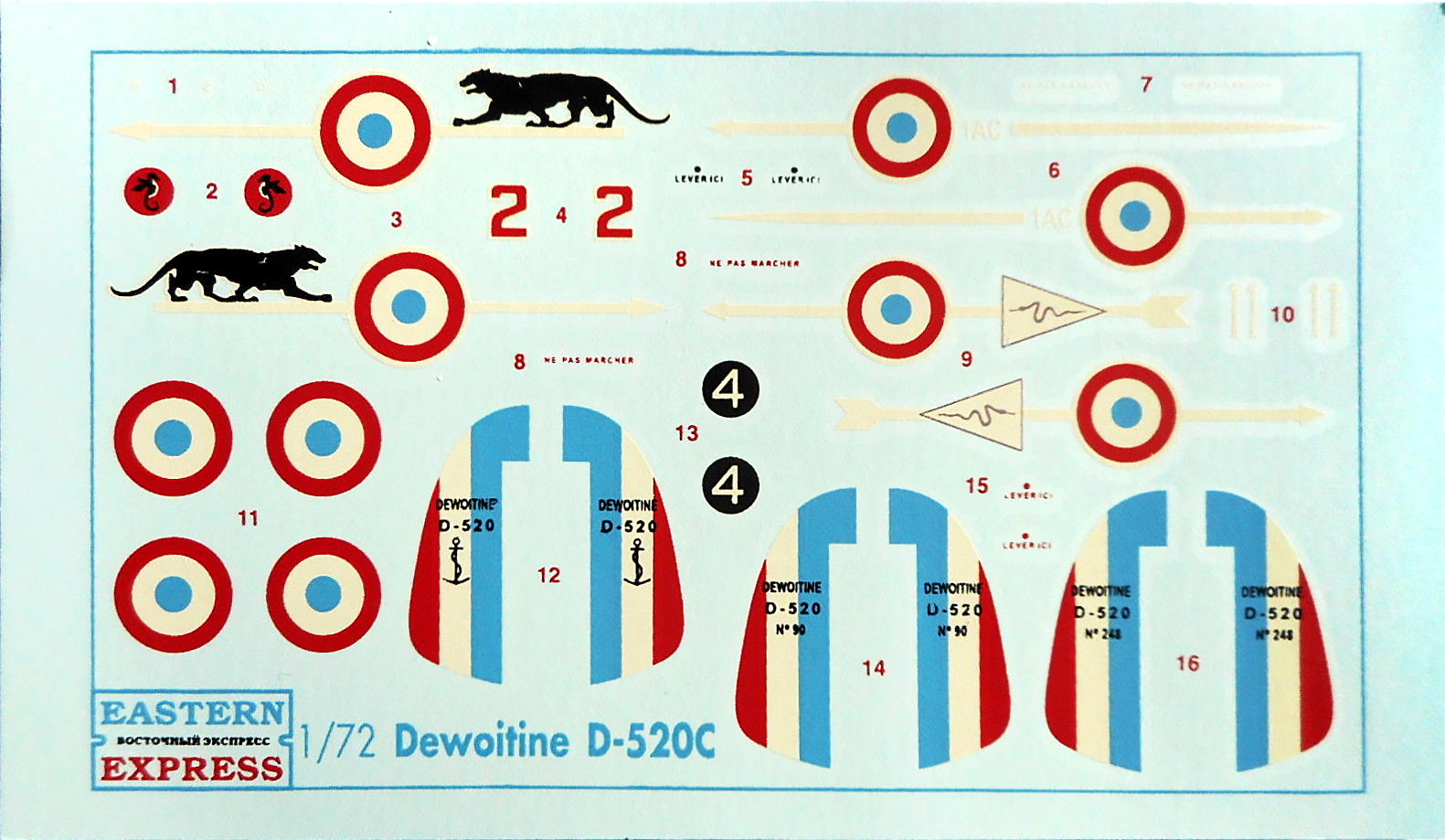
|
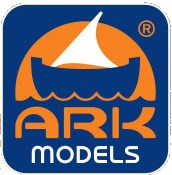
Dewoitine D520 Ark Models AK 72016, 2006-
|
|
19.09.2017
|


































































